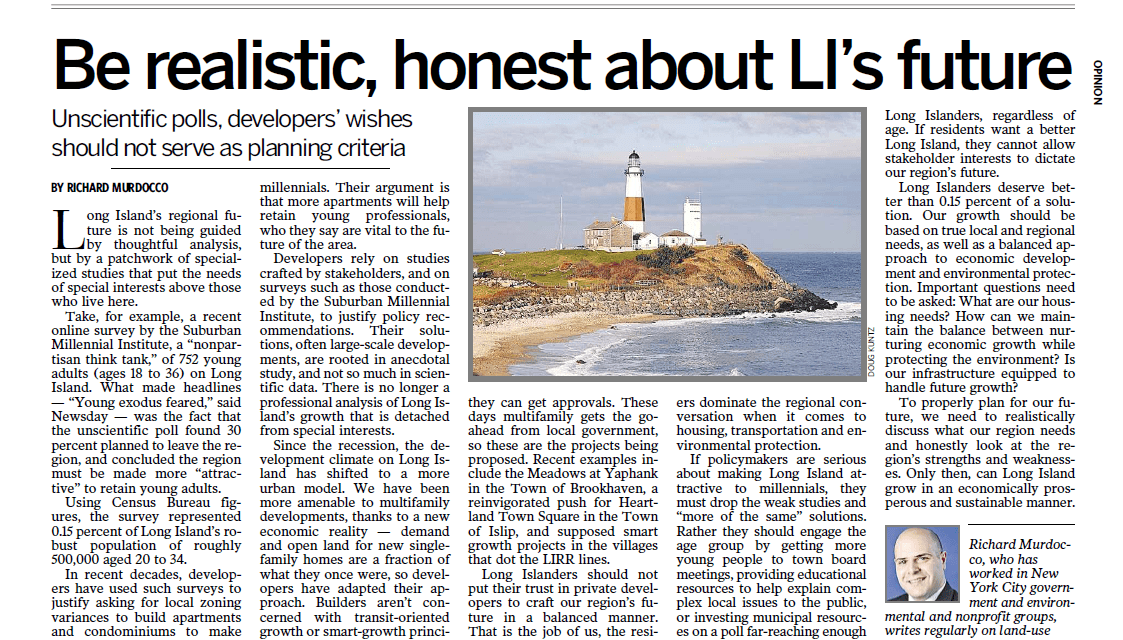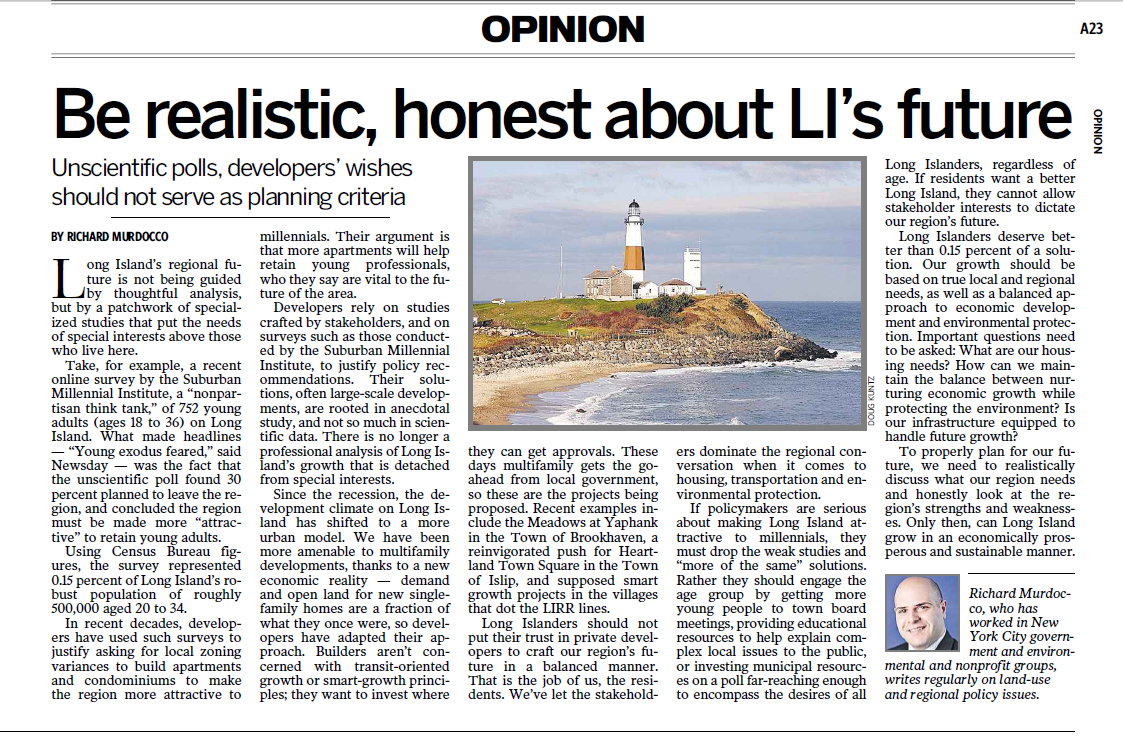The following appeared in Newsday in both print, on page A23, and online, on March 2nd, 2015. You can read the online version here.
Long Island’s regional future is not being guided by thoughtful analysis, but by a patchwork of specialized studies that put the needs of special interests above those who live here.
Take, for example, a recent online survey by the Suburban Millennial Institute, a “nonpartisan think tank,” of 752 young adults (ages 18 to 36) on Long Island. What made headlines — “Young exodus feared,” said Newsday — was the fact that the unscientific poll found 30 percent planned to leave the region, and concluded the region must be made more “attractive” to retain young adults.
Using Census Bureau figures, the survey represented 0.15 percent of Long Island’s robust population of roughly 500,000 aged 20 to 34.
In recent decades, developers have used such surveys to justify asking for local zoning variances to build apartments and condominiums to make the region more attractive to millennials. Their argument is that more apartments will help retain young professionals, who they say are vital to the future of the area.
Developers rely on studies crafted by stakeholders, and on surveys such as those conducted by the Suburban Millennial Institute, to justify policy recommendations. Their solutions, often large-scale developments, are rooted in anecdotal study, and not so much in scientific data. There is no longer a professional analysis of Long Island’s growth that is detached from special interests.
Since the recession, the development climate on Long Island has shifted to a more urban model. We have been more amenable to multifamily developments, thanks to a new economic reality — demand and open land for new single-family homes are a fraction of what they once were, so developers have adapted their approach. Builders aren’t concerned with transit-oriented growth or smart-growth principles; they want to invest where they can get approvals. These days multifamily gets the go-ahead from local government, so these are the projects being proposed. Recent examples include the Meadows at Yaphank in the Town of Brookhaven, a reinvigorated push for Heartland Town Square in the Town of Islip, and supposed smart growth projects in the villages that dot the LIRR lines.
Long Islanders should not put their trust in private developers to craft our region’s future in a balanced manner. That is the job of us, the residents. We’ve let the stakeholders dominate the regional conversation when it comes to housing, transportation and environmental protection.
If policymakers are serious about making Long Island attractive to millennials, they must drop the weak studies and “more of the same” solutions. Rather they should engage the age group by getting more young people to town board meetings, providing educational resources to help explain complex local issues to the public, or investing municipal resources on a poll far-reaching enough to encompass the desires of all Long Islanders, regardless of age. If residents want a better Long Island, they cannot allow stakeholder interests to dictate our region’s future.
Long Islanders deserve better than 0.15 percent of a solution. Our growth should be based on true local and regional needs, as well as a balanced approach to economic development and environmental protection. Important questions need to be asked: What are our housing needs? How can we maintain the balance between nurturing economic growth while protecting the environment? Is our infrastructure equipped to handle future growth?
To properly plan for our future, we need to realistically discuss what our region needs and honestly look at the region’s strengths and weaknesses. Only then, can Long Island grow in an economically prosperous and sustainable manner.
Richard Murdocco, who writes on Long Island’s land use and regional policy issues at TheFoggiestIdea.org, has worked in New York City government, environmental and development nonprofit groups.












